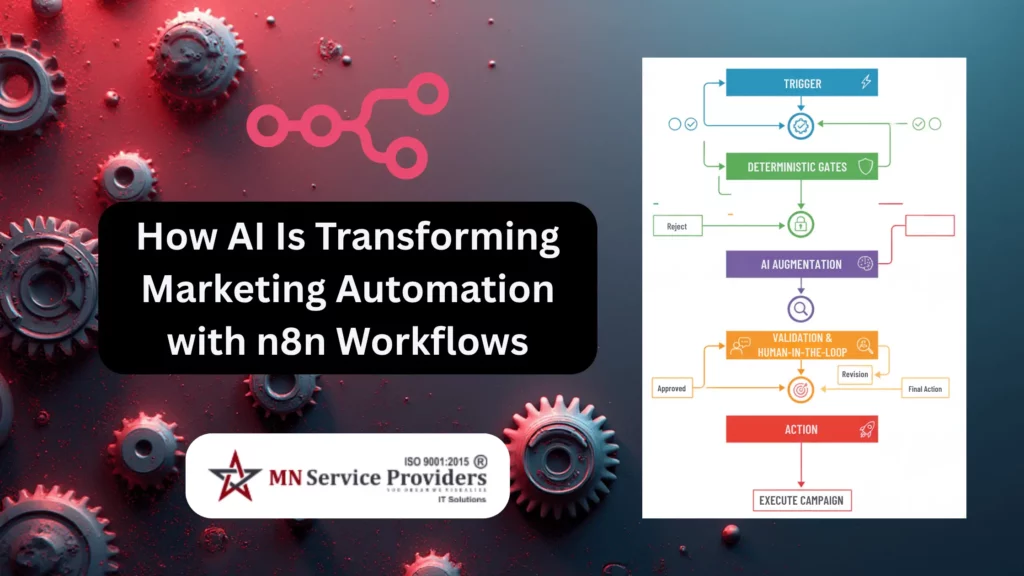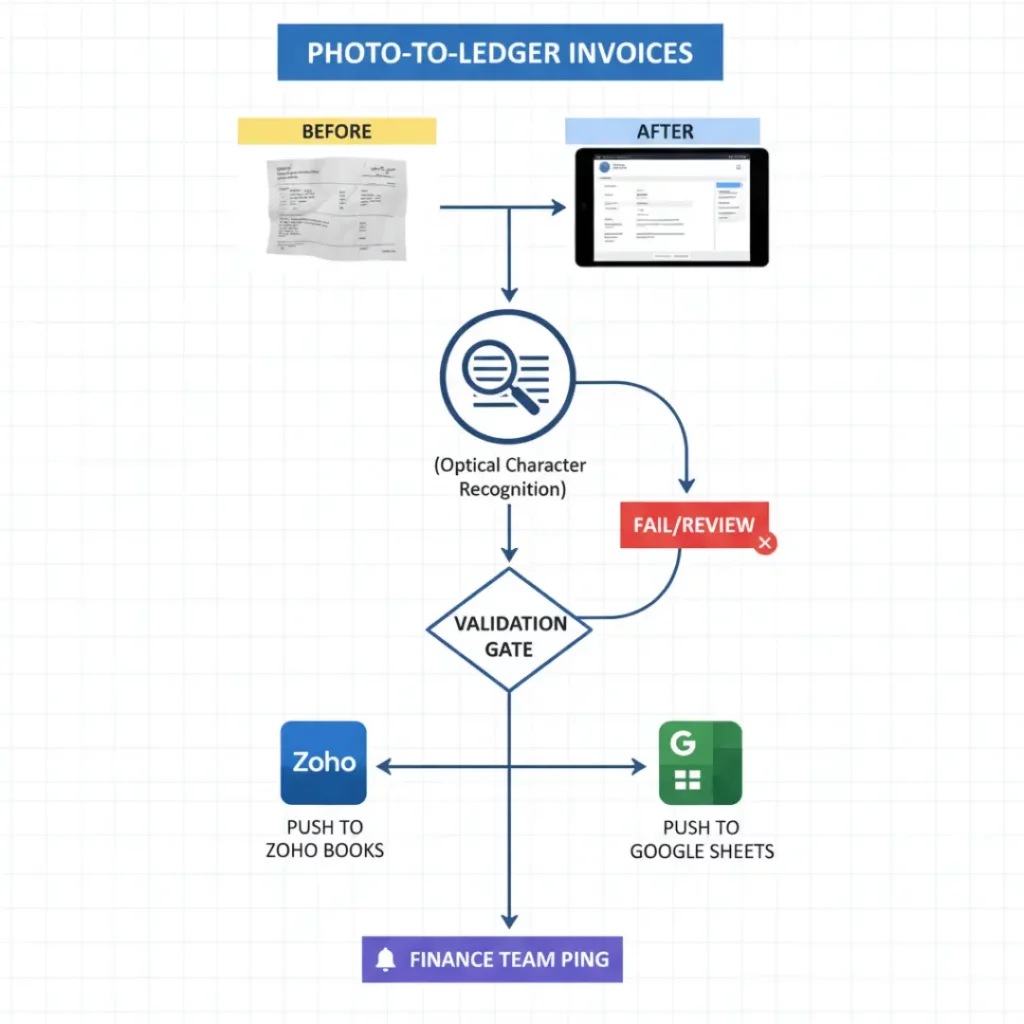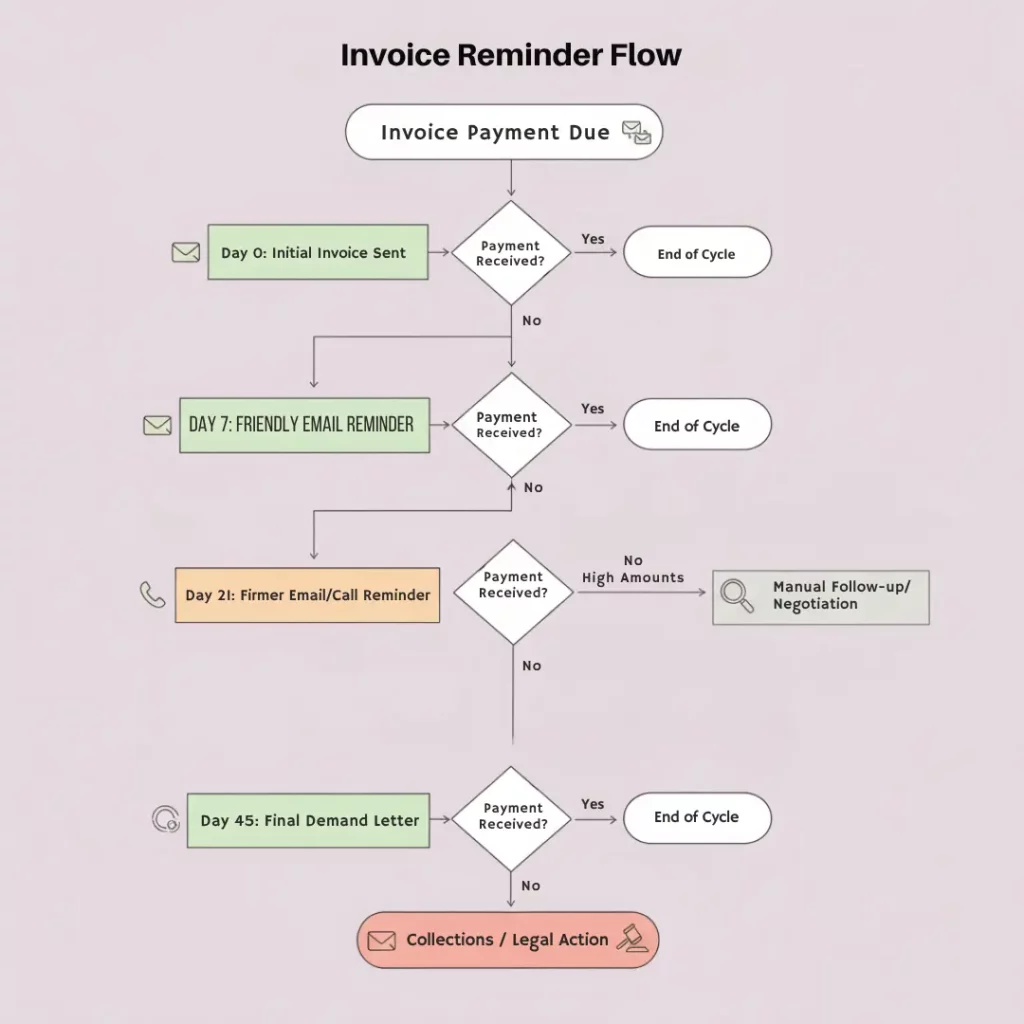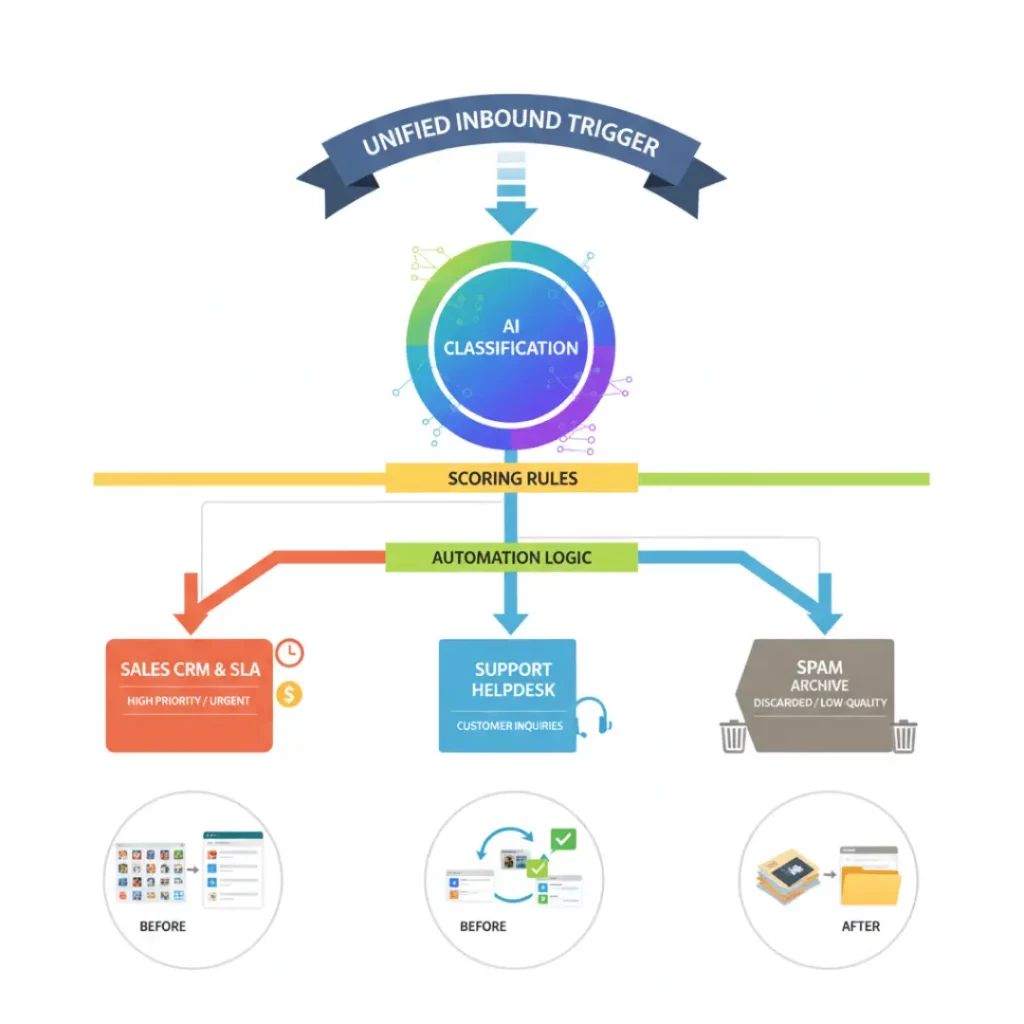
Let’s be honest. Most small businesses in India don’t fail at automation because they don’t care. They fail because the tools feel like duct tape. Things break. Things confuse. Things cost more than they return. You were promised “magic” from marketing automation AI. You got late-night errors and silent failures. This guide shows a better path: use hard rules first, then apply intelligence only where it helps.
The end of duct tape
Picture your day. You chase a courier for a paper invoice. You miss a WhatsApp lead while switching between calls and spreadsheets. You write follow-ups at 11 p.m. and still forget someone. Every miss hurts cash flow. Every delay creates stress. Sound familiar?
You tried “easy automation.” You added apps. Then more apps. Suddenly there are five dashboards, ten zaps, and zero ownership. One change upstream breaks three flows downstream. You start thinking automation is a scam. It’s not. The problem isn’t you. It’s the approach.
Here’s the simple thesis: build with rules first, then apply marketing automation AI where language and images need help. This is “Deterministic-First, AI-Second.” Guardrails first. Intelligence second. Use it for targeted tasks. You’ll see fewer errors, faster cash, and workflows that don’t break quietly.
Takeaway: stop stacking hacks; start building systems that use marketing automation AI in the right places.
Why your automation fails
The Franken-stack problem
When you stitch tools together, costs sneak up. Each tool adds a new failure point. Each zap adds complexity. A small change in one service breaks another service you forgot existed. Your time goes into debugging, not growing. This is why duct tape automation bleeds your margins. The promise gets lost inside a messy stack.
Rules vs. reality
Pure rule-based flows fail when data is messy. A photo of an invoice. A half-written email. A voice note on WhatsApp. Hard if-this-then-that logic struggles with unstructured content. You expected drag-and-drop simplicity. You got edge cases. This is where marketing automation AI helps—understanding text, reading images, and summarizing threads. But it only works when rules set the boundaries first.
Fear of unreliable AI
Your fear is valid. Models can hallucinate. They can write off-brand messages. They can feel cold. They can make expensive mistakes if you give them the keys. The fix isn’t to avoid marketing automation AI. The fix is to control it. Use guardrails. Use templates. Validate with rules. In higher-risk cases, add a human check.
Takeaway: the issue isn’t effort; it’s the missing architecture that makes marketing automation AI safe.
The blueprint that works
Deterministic-First, AI-Second
Don’t let AI drive. Let it assist. Build the foundation with rules. Then add marketing automation AI for specific jobs: OCR on invoices, classification of messages, summaries of long threads, reading photos, extracting GST numbers from text, and translating tone into polite reminders. This is targeted use, not blind trust.
Think modular
Build like LEGO, not glue. Use small, reusable blocks. One block for filters. One for validation. One for notifications. One for logging. Swap a block without breaking the system. Debug faster. Scale safely. This is how marketing automation AI becomes dependable in your daily operations.
The 5-step guardrail pattern
Use this pattern in every workflow. It keeps you safe while using marketing automation AI.
- Trigger
Start with a clear event: new email, photo uploaded, form submitted, missed call, or WhatsApp message. Events start the flow, not the model. - Deterministic Gates
Apply hard rules first. If the sender is from your own domain, ignore. If invoice amount is greater than a set number, flag for manual review. If subject contains “invoice,” route to finance. These gates filter noise before any AI touches the task. - AI Augmentation
Now use marketing automation AI for the smart part. OCR a photo. Summarize an email thread. Classify an inquiry as sales, support, or spam. Extract contact details. This is where it shines—language and vision tasks. - Validation & Human-in-the-Loop
Verify outputs with rules. Check GST format. Check totals match line items. Verify vendor names. If confidence is low or amounts are high, route to a human. Use AI to accelerate, not replace human judgment. - Action
Only after passing rules and checks do you execute: update the CRM, create a ledger entry, send a WhatsApp message. This is how marketing automation AI avoids costly mistakes and still saves time.
Takeaway: architecture beats enthusiasm. Guardrails make AI reliable.
Three practical n8n workflows
Workflow 1: Photo-to-Ledger invoices
Pain: Paper invoices slow payments and cause errors.
Flow: A photo upload triggers the workflow. Marketing automation AI performs OCR to extract vendor, date, GST, and totals. Code nodes validate GST format and check totals match line items. If amounts mismatch, flag for review. If clean, push to Zoho Books or Google Sheets. A quick message pings finance for approval.
Result: Paper turns into GST-ready records. Data entry time drops. Cash moves faster. Audits get easier.
Why it works: Rules do the critical checks; AI handles OCR and extraction.
Takeaway: photos become ledger entries, not chores, thanks to targeted use of marketing automation AI.
Workflow 2: Be Polite Yet Get Paid
Pain: Payment reminders are awkward and inconsistent.
Flow: A scheduler checks overdue invoices daily. Marketing automation AI drafts polite, culturally-aware WhatsApp reminders. Tone escalates by aging: friendly at 7 days, firmer at 21, resolute at 45. A rule checks whether the client replied recently to avoid spamming. For sensitive accounts or high amounts, route to a human before sending.
Result: Reminders go out on time with the right tone. Collections improve without burning relationships.
Why it works: Templates and rules constrain marketing automation AI, ensuring brand safety.
Takeaway: empathy can be automated; rudeness cannot—use AI with tone guardrails.
Workflow 3: Missed Calls to Qualified Leads
Pain: Leads from calls, WhatsApp, and forms slip through cracks.
Flow: A unified trigger captures all inbound inquiries. Marketing automation AI classifies intent (sales, support, spam) and extracts name, phone, and email. Rules score leads using keywords and known domains. Sales-ready leads go to CRM with owner assignment and SLA. Support items go to the helpdesk. Spam gets archived.
Result: A clean funnel where hot leads get quick human attention. Speed-to-lead improves. Waste drops.
Why it works: AI handles messy messages; rules enforce quality and routing.
Takeaway: speed wins, chaos loses—put marketing automation AI to work with scoring rules.
Your questions answered
How do I start without breaking things?
Start tiny. Pick one workflow. Define one outcome: faster ledger entry, faster first response, or fewer reminder errors. Map the 5 steps. Add two hard gates. Add one AI task. Add one validation and one action. Ship in a week, not a quarter. Marketing automation AI is safer when it enters late in the flow, not at the start.
What’s different for Indian SMBs?
WhatsApp is central. Paper is common. Vendor lists are diverse. Keep inputs simple: photos, short texts, voice notes. Validate GST. Validate amounts. Validate contacts. Design for noisy reality. AI helps read the noise, but rules keep you safe in that noise.
Is AI safe for customer messages?
Yes—if you design it right. Use pre-approved templates. Lock tone and language. Add brand phrases. Use rules for sensitive cases. Add a human check for big accounts or risky messages. Marketing automation AI drafts; rules decide; humans approve when stakes are high.
How do I avoid a new Franken-stack?
Choose one workflow engine, one primary data source (CRM or warehouse), and a few reliable integrations. Standardize. Keep logs. Version your prompts. Kill automations that don’t move cash flow, customer satisfaction, or compliance. Let marketing automation AI serve the backbone—not replace it.
What metrics matter?
- Time-to-ledger: how fast an invoice becomes a record.
- Time-to-first-response: how fast you reply to a lead.
- SLA adherence: how reliably you hit support or sales response times.
- Collection cycle time: how long it takes to get paid.
- Error rate: how often data is missing or wrong.
If an automation doesn’t improve one of these, it’s decoration. Marketing automation AI should show clear wins here.
Common pitfalls and how to avoid them
- Vague prompts: Models need clarity. Use structured prompts with examples and expected fields.
- No confidence checks: Always verify with rules and score thresholds. If confidence is low, route to a human.
- Too many tools: Reduce tool count. Fewer moving parts. Fewer surprises.
- No logging: Log inputs, outputs, and decisions. You can’t improve what you can’t trace.
- Skipping sandbox tests: Test with real but safe data first. Tune your setup before going live.
These steps keep marketing automation AI predictable and cost-effective.
Implementation playbook
- Week 1: Pick one workflow tied to cash. Invoice entry or payment reminders are perfect. Map the 5 steps. Write two rules. Define one AI job. Define one validation. Define the final action.
- Week 2: Build a minimum version. Use sample data. Add logs. Add alerts on failure. Keep prompts short and concrete. Make the model return structured fields, not essays.
- Week 3: Pilot with a small group. Measure time saved and errors avoided. Tighten rules. Tighten templates. Adjust thresholds. Make it boring.
- Week 4: Roll out gradually. Train the team on exceptions. Set a schedule to review logs weekly. Expand only when metrics improve.
Prompts and templates
For OCR and extraction
- “Extract vendor_name, invoice_date, gst_number, subtotal, tax, total from the attached text. Return JSON with these exact keys. If missing, set value to null.”
Clear fields make marketing automation AI predictable and easy to validate.
For reminder drafts
- “Write a polite WhatsApp reminder for an overdue invoice. Keep it under 80 words. Be courteous, concise, and clear. Include invoice number and due date. End with a friendly call to action.”
Then apply rules to check length, key fields, and tone.
For classification
- “Classify message intent as one of {sales, support, spam}. Extract name, email, phone if present. Return JSON with intent, name, email, phone.”
This keeps your output structured and easy to score.
Security and compliance
- Never send raw documents to vendors without a legal basis.
- Mask sensitive fields where possible.
- Log only what you need.
- Review data retention policies for any provider.
- Add manual approvals for high-value transactions.
These guardrails keep marketing automation AI helpful and compliant.
Team training
- Teach the 5-step pattern.
- Explain where AI is used and why.
- Show how to handle exceptions.
- Give a single channel for reporting issues.
This builds trust and reduces fear.
Scaling the approach
Once one workflow is stable, clone the pattern. Use the same gates, the same validation blocks, the same logging style. Swap in a different AI task for the new job. This repeatable design makes marketing automation AI a reliable teammate instead of a risky experiment.
Cost control
- Start with the smallest model that performs well.
- Batch tasks where possible.
- Cache stable results (like vendor lookups).
- Monitor token usage.
- Set monthly budgets and alerts.
Smart cost controls make marketing automation AI save money instead of surprising you.
Take your first step
The core message is simple: Deterministic-First, AI-Second. Guardrails first, marketing automation AI second. Reliability before cleverness. That’s how you save time without risking your reputation. That’s how you improve cash flow without adding chaos. That’s how you scale without losing control.
Here’s a tiny start you can do today.
Pick one repetitive task you did in the last 24 hours. On paper, map the 5 steps:
- Trigger: what starts it?
- Two Gates: what hard rules filter noise?
- One AI assist: where does marketing automation AI help most?
- One Validation: what check keeps you safe?
- One Action: what outcome updates your system or messages a customer?
That’s your first reliable workflow. It’s boring in the best way. It saves minutes every day and errors every week. Do one. Then another. Soon, your team will trust the system because the system respects the team.
Automate with speed, clarity, and confidence
MN Service Providers uses n8n to build custom, reliable marketing automation AI workflows for Indian SMBs.
From photo-to-ledger invoice processing, to polite payment reminders, to lead funnels that never miss a call, these systems are built with guardrails and designed for real-world mess.
When you’re ready to move from paper to digital, marketing automation can get you there, without the duct tape.
Melvin C Varghese is an author with more than 8 years of expertise in DevOps, SEO and SEM. His portfolio blogs include a Digital Marketing blog at https://melvincv.com/blog/ and a DevOps blog at https://blog.melvincv.com/. He is married with 2 small kids and is a simple person who eats, sleeps, works and plays. He loves music, comedy movies and the occasional video game.


